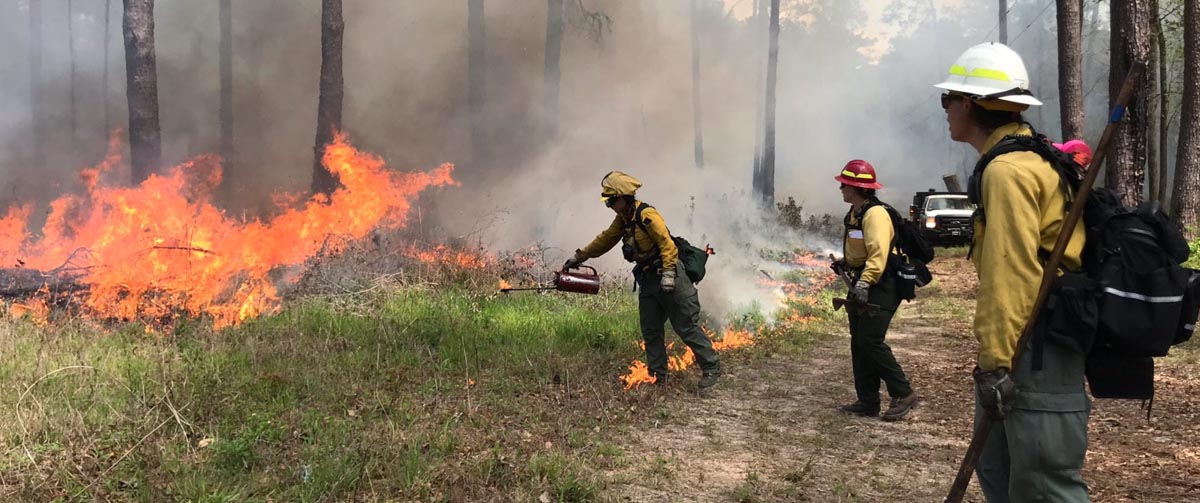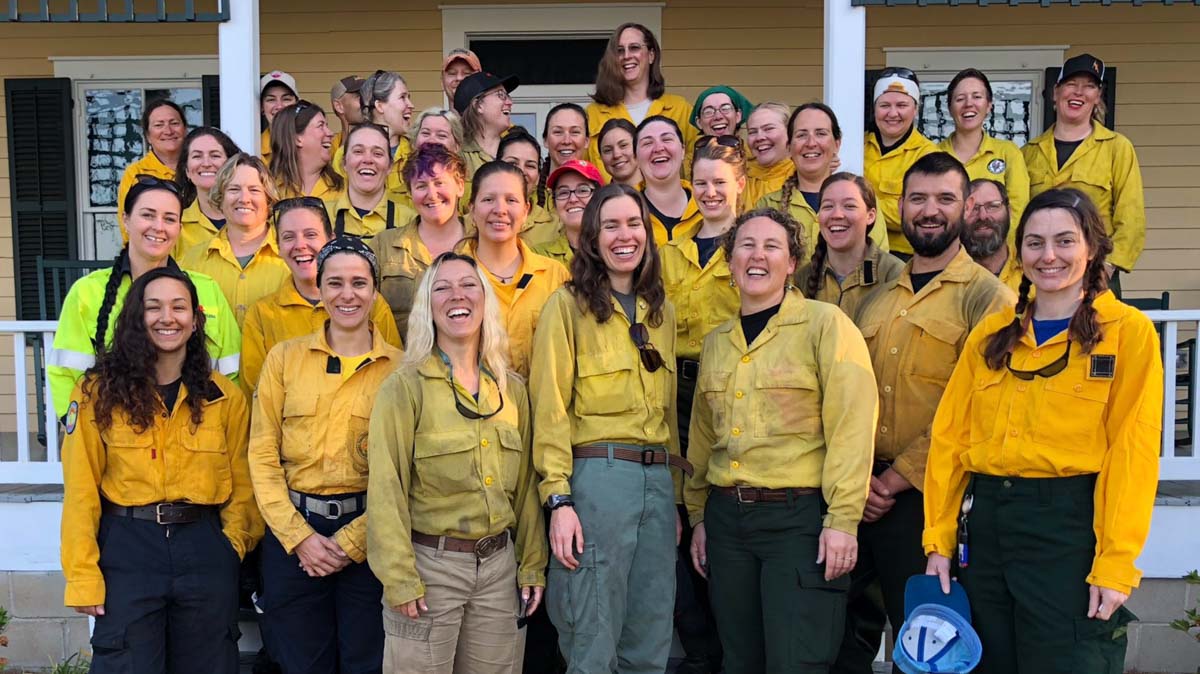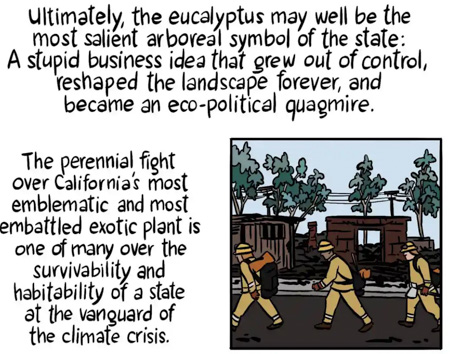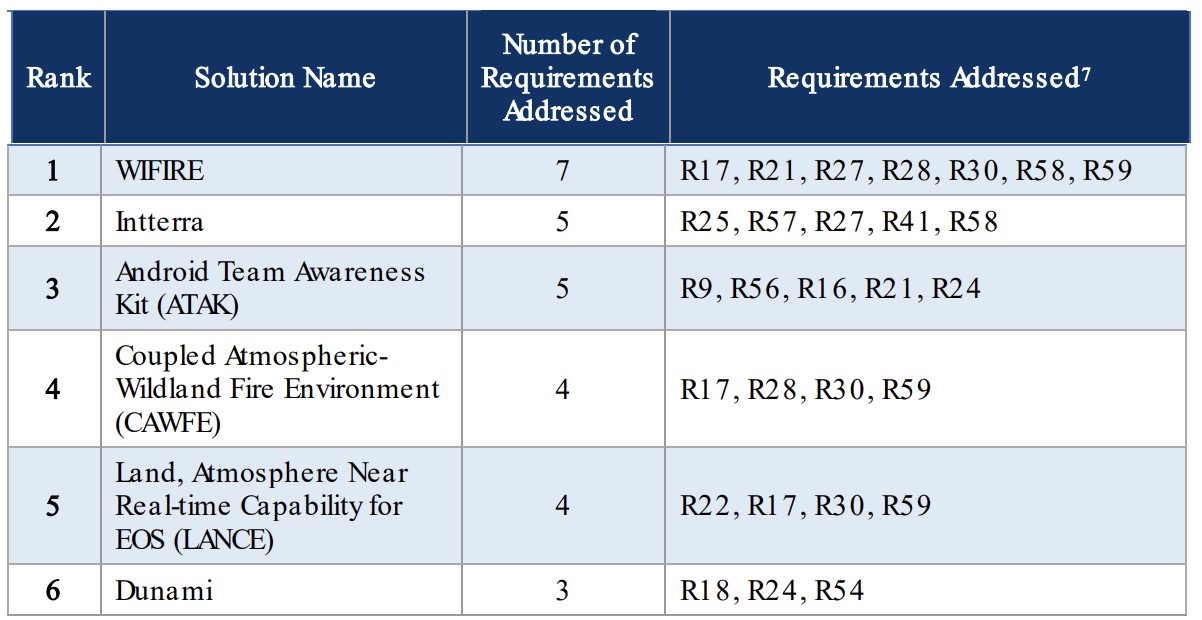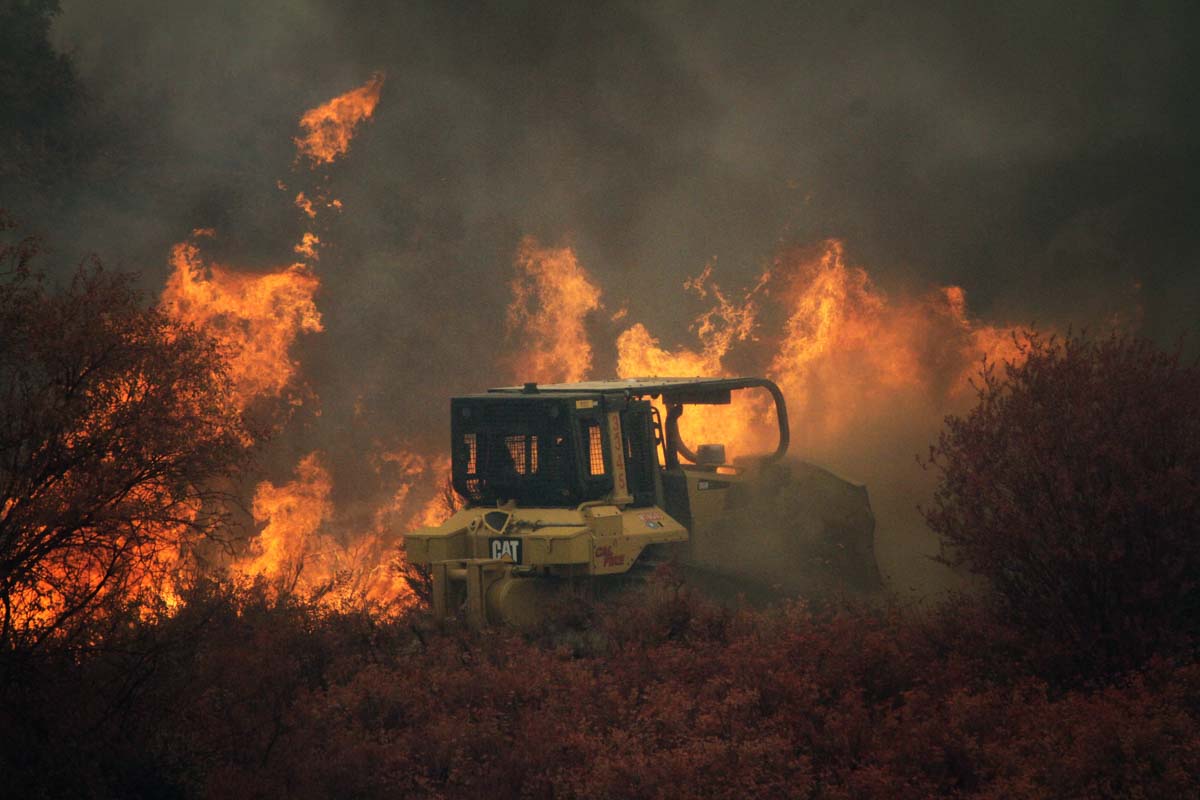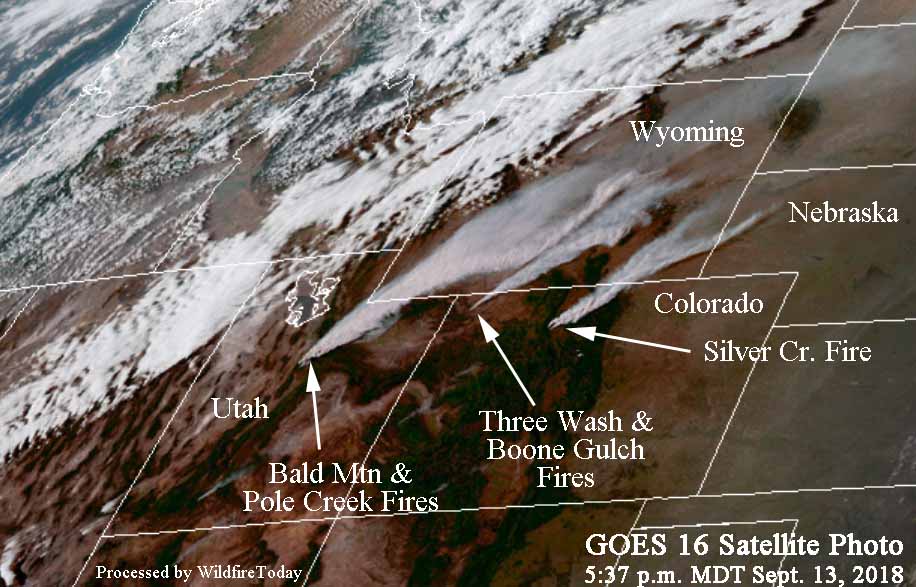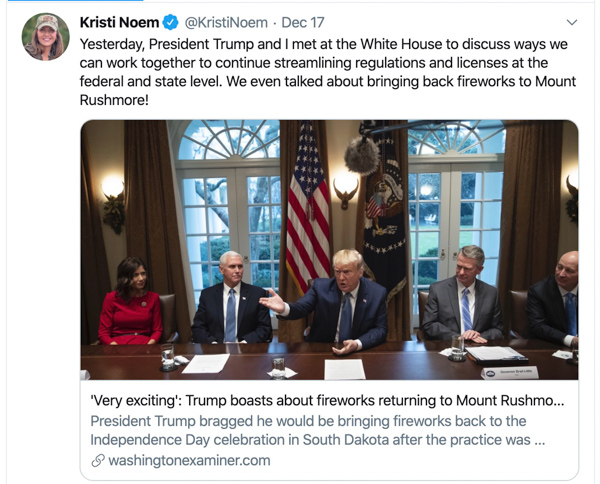
During a December 16 meeting in the White House with several Governors and administration officials, South Dakota Governor Kristi Noem and Mr. Trump both said fireworks were going to be displayed at Mount Rushmore National Memorial in South Dakota during the 4th of July holiday in 2020.
The fireworks were discontinued after 2009 due to wildfires that were ignited by the explosions over the Ponderosa Pine forest, and, very serious contamination of the water caused by the chemicals in the fireworks.
Below is a portion of the transcript of the meeting provided by the White House in which Mr. Trump said Governor Noem asked him for a “favor”.
THE PRESIDENT: It’s a great place [South Dakota]. And you also are going to have a very exciting Fourth of July.
GOVERNOR NOEM: We are. We’re going to have fireworks.
THE PRESIDENT: Right.
GOVERNOR NOEM: And I’m hoping you will —
THE PRESIDENT: For many years — for many years, the fireworks —
GOVERNOR NOEM: — you will come — at Mount Rushmore.
THE PRESIDENT: Well, we’re going to think about it. Mount Rushmore. They ended the fireworks. How many years ago? A long time.
GOVERNOR NOEM: Gosh, it was at least 10 years ago. So —
THE PRESIDENT: Nobody knows why, but you just couldn’t have it. And now you’re going to have fireworks. And the Governor called, and she said, “You got to do me a favor.” Right?
GOVERNOR NOEM: And you did.
THE PRESIDENT: And we worked it out. And we got it done. And you’re going to have fireworks.
In May, 2019 both the Governor and the President issued statements or tweets saying the fireworks were being restored.
President Trump, May 8, 2019:
I am pleased to inform you that THE BIG FIREWORKS, after many years of not having any, are coming back to beautiful Mount Rushmore in South Dakota. Great work @GovKristiNoem and @SecBernhardt! #MAGA
Governor Kristi Noem also distributed a press release, writing in part, “[T]he State of South Dakota and the U.S. Department of the Interior have agreed to bring fireworks back to Mount Rushmore National Memorial beginning with the 2020 Independence Day celebration.”
The Memorial is administered by the National Park Service which is part of the Department of the Interior. The DOI signed a Memorandum of Agreement with the State of South Dakota, “to work to reinstate fireworks at Mount Rushmore for Fourth of July celebrations.”
Following the May announcements by the politicians, the NPS said it was not etched in stone that the fireworks would occur.
“The agreement”, said Maureen McGee-Ballinger, chief of interpretation and education at Mount Rushmore, “is the first step in a long process. The National Park Service will be working with the state, land management agencies, various specialists in a variety of fields, and will be exercising our authority under state and federal law to explore safe and available options in regards to the proposal. So, it’s a proposal. This is just the beginning of the process to look at that.”
Today we checked with the NPS again and a spokesperson in Washington said, “The National Park Service has not made a formal decision; that will happen through the [National Environmental Policy Act] and permitting processes. The NPS expects to release a NEPA document for public review in February, 2020.”
So, officially, no decision about Mount Rushmore fireworks has been made, in spite of the statements by the President and the Governor to the contrary. The word in D.C. is that the fireworks are a priority, so how would you place a bet? They will or will not happen?
During the first five years of the fireworks, Mount Rushmore was one of the seven Parks within the Northern Great Plains Fire Management organization for which I was the Fire Management Officer.
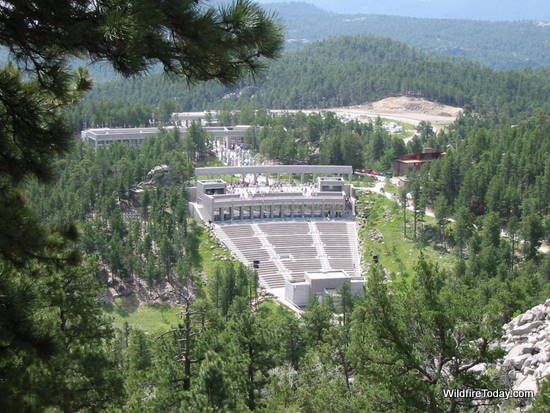
The park is not just the stone carving; it is surrounded by thousands of acres of timber and the Black Hills National Forest.
Part of my job was to plan for suppression of the fires that started when burning embers from the fireworks hit the ground. We mobilized dozens of firefighters during the busy part of the fire season and had them positioned just outside the falling-debris zone. We had to restrict out of area fire assignments to be sure enough firefighters remained available for the show. After the aerial explosions ended, we would move in, search at night in the steep rocky terrain, and extinguish the fires.
In one of the first displays over a dozen fires started. They were all put out when they were small, but it was proven then to be an insane concept to shoot off literally tons of fireworks over a ponderosa pine forest in July.
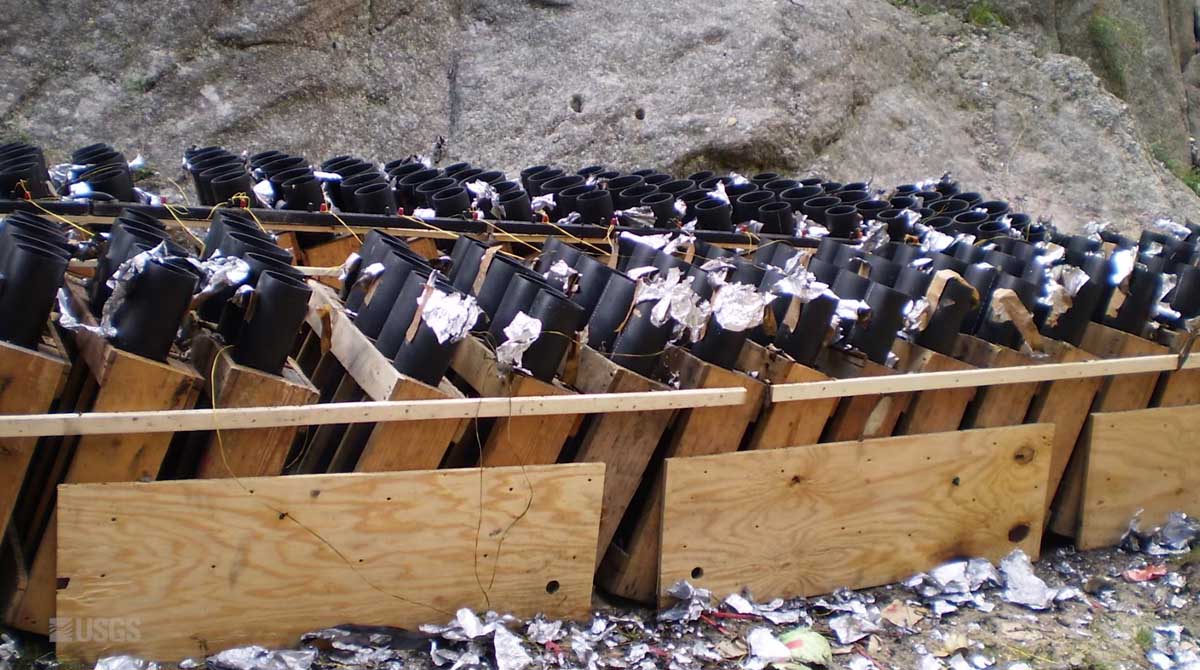
The shows left on the sculpture and in the forest unexploded shells, wadding, ash, pieces of the devices, paper, and poisonous chemicals; stuff that can never be completely picked up in the steep, rocky, rugged terrain.
In 2016 the USGS discovered that the ground and surface water at Mount Rushmore is contaminated with percholrate, a component of rocket fuels and explosives. They determined that the chemical came from the fireworks over that 12-year period.
Data from the USGS report showed that a maximum perchlorate concentration of 54 micrograms per liter was measured in a stream sample, which is about 270 times higher than that in samples collected from sites outside the memorial. The Centers for Disease Control says high levels of perchlorates can affect the thyroid gland, which in turn can alter the function of many organs in the body. The fetus and young children can be especially susceptible.

